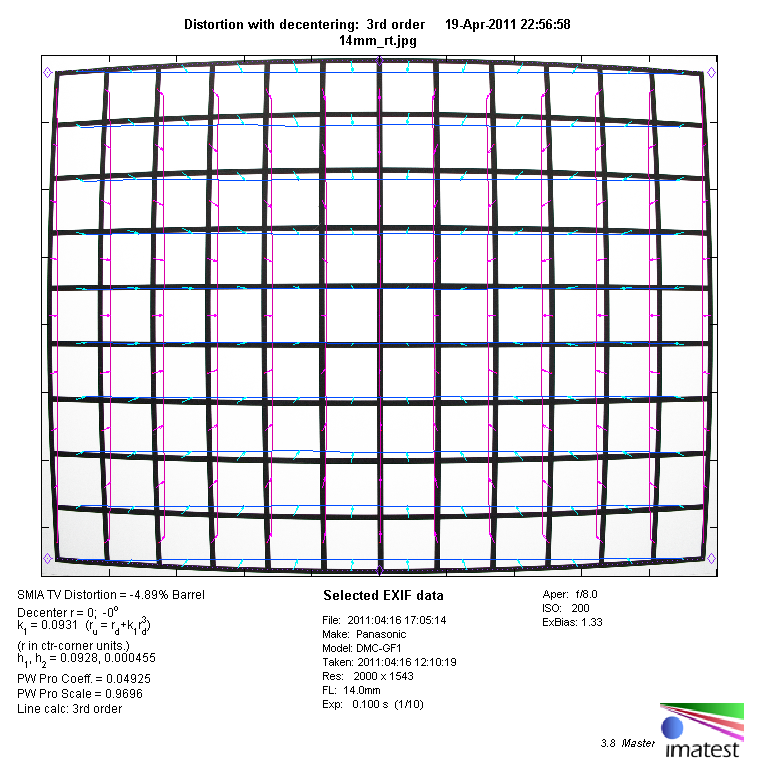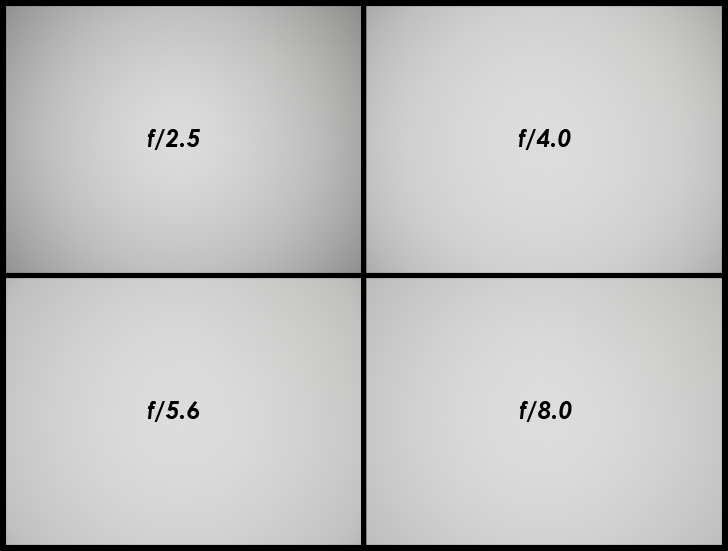|
Page 2 of 3

Distortion
The tiny pancake lens produces a slight degree of barrel distortion (~0.85%) which is rarely noticeable in field conditions (fig. 1). However, keep in mind that Micro-4/3 images are auto-corrected according to the stored lens profile, which is done either by the camera directly (JPEG) or by the more popular RAW-converters a la Photoshop. The second figure shows the original RAW results and thus the principal capability of the lens with a very heavy barrel distortion of ~5% which is actually very extreme for a prime lens.
 - Figure 1 - Auto-corrected image
 - Figure 2 - RAW converted via RAW Therapee
Vignetting
The following graph shows the vignetting characteristic of the Panasonic Lumix G 14mm f/2.5 ASPH between open aperture and f/8.0.
The wide-angle lens has a fairly mediocre vignetting characteristic and it is not automatically corrected. The figure below shows the corresponding performance of JPEGs obtained straight from the camera. At f/2.5 the amount of vignetting is around ~1.2EV which is heavy as well as easily noticeable in field images and the the situation improves significantly when stopping down to f/4.0 and it's not really an issue anymore from f/5.6 onwards.

- Figure 3 - Vignetting at f/2.5, 4.0, 5.6 and 8.0
MTF (resolution)
The prime lens disappoints somewhat regarding its resolution capabilities. The center quality is generally on a very good to excellent level throughout the relevant aperture range. However, the borders/corners are good to very good. However, apart from f/2.5 - with slightly softer extreme corners - the border as well as extreme corners show surprisingly constant values with only slight deviations.
Please note that the MTF results are not directly comparable across the different systems!
Below is a simplified summary of the formal findings. The chart shows line widths per picture height (LW/PH) which can be taken as a measure for sharpness.
If you want to know more about the MTF50 figures you may check out the corresponding Imatest Explanations
Chromatic Aberrations (CAs)
Lateral CAs (color shadows at harsh contrast transitions) are very well controlled reaching a maximum of less than 0.2px at the image borders, which isn't really field relevant anymore.
However, we need to mention again that this is the result of the usual auto-correction applied by the camera (or Photoshop). The "RAW" CAs are as pronounced as 0,9px which is still pretty good in absolute terms albeit a little strong for a prime lens.
|